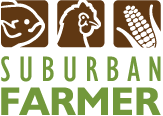How a HARD NOSED and yet FLEXIBLE Gardening approach will result in a STRONGER vegetable garden.
Farming is a tough business. You only need to speak to one of our ORGANIC or INORGANIC food producers, or turn on the news during extreme weather to learn how tough it is on the land. STORMS, FLOODS, DROUGHT, WIND, FIRES ETC
There are important lessons that can be learnt from our farmers, including the ability to be tough through hard times and move on quickly, whilst also being flexible enough to pivot when needed. Apply this approach to your own vegetable garden and you will grow better and grow more produce.
Your Vegetable Garden Business
Treat your vegetable garden like a business. Your garden requires an investment and you need to ensure you get a return! In order to do so, you will need to make tough business decisions along the way. But, how can I be TOUGH/RIGID and yet FLEXIBLE?
How to be tough in your backyard vegetable garden business
Whether you buy or grow your own seedlings, when it comes time to plant you are most likely going to have more seedlings than area available.
Especially when standing in front of well-presented seedlings at any garden centre, it is easy to get overly enthusiastic and purchase all the types of vegetables you like. With the notion of the more plants you grow the more produce you will harvest….right?
Consider that a standard punnet of seedlings from a garden centre contains around 6-8 seedlings. If you only choose 5 different varieties, that is around 40 plants you are going to plant!
Most of us will NOT HAVE the room to plant all 40 plants.
This is where you need to make a tough call. Pick the strongest and best two seedlings from each variety, gently tease them apart if possible. Plant the STRONGEST and SAVE and the rest for now.
You will have mixed emotions. You just paid good money on these seedlings. The more plants the more produce right? These seedlings are living things! I can’t throw them away or kill them!
So you end up planting all 6-8 plants per punnet.
The reality is that two thriving plants will produce more than twice as much produce as the 8 plants that you squished together in your garden bed.
I know it’s hard, but you have got to be ruthless, but with LOVE!
Every plant you plant competes with every other plant you plant. They compete for water, light, nutrients, and root space. Knowing how close you can arrange your plants is crucial to maximising productivity while still achieving robust plants and vegetables. So it’s worth doing a small amount of research to find the recommended spacing of your plants. But, don’t be RIGID
Note: I usually hold onto the remaining seedlings for a few days to ensure the chosen seedlings look like they are going to be a success. If for whatever reason the seedlings planted take a bad turn, you will have a ready replacement for them. Otherwise, keep them in separate containers and grow out and plant in someone else’s yaad (garden/yard) or use for SUCCESSION PLANTING.
Out of Season…Out of the Garden!
If a plant doesn’t look like it is going to be a roaring success and supply you with a top harvest then it probably isn’t. Your garden should NOT BE A HOSPITAL for weak and sickly plants.
If you have out of season plants, for example spinach in summer, take it out and replace it with something better suited to the conditions. You would rather have a plant that requires warm weather to be fruitful than a plant that needs to be watered multiple times a day just to stay alive.
Similarly a tomato plant grown in winter may produce one or two tomatoes over a long and otherwise unproductive period, which is nothing compared to the 1kg broccoli head that could have formed due to the cold conditions relative to the plants needs.
Paging Dr Farmer…Paging Dr Farmer
Don’t waste valuable time and resources nursing a sick plant back to health. Take it out of the garden and replace it with a new seedling. Your time and resources are better spent giving the new seedling everything it needs to thrive.
If your vegetables have obvious signs of disease, most times it is best to just throw them out. You don’t want the disease/fungus being passed on to surrounding plants. Your other option is to spend money on a treatment that could potentially put a question mark over the edibility and organic nature of your produce and soil health.
Other times a plant may show signs of a deficiency, and in many cases, when the plant shows signs of a MAJOR DEFICIENCY, TOXICITY or PATHOGENTIC INFECTION it’s too late to act (i.e. blossom end rot in tomatoes…the produce is already spoilt). You may correct the deficiency and prolong the life of the plant however its ability to produce the type of produce you expected is affected.
It’s better to learn what has caused the deficiency, take a lesson out of it and remember that prevention is better than a cure.
An Emotional Attachment
Sometimes if you have gone to the effort of preparing an area, buying seedlings, fertilising, whispering sweet nothings, including them and even singing to them (I do all of the aforementioned and more) – things just go wrong – and no amount of love will revive them to the point where you get a decent harvest.
Don’t be so emotionally attached to your plants! Remember this is a natural business, cut your losses and move on!
With GREATNESS and FULLNESS of LOVE Ras Mark SUBURBAN FARMER

